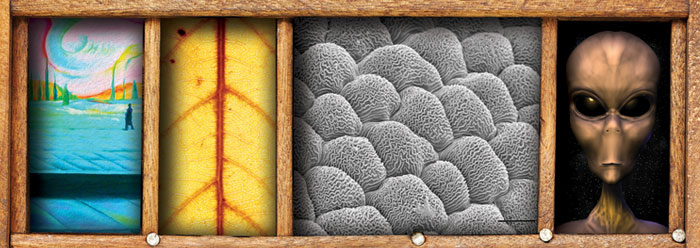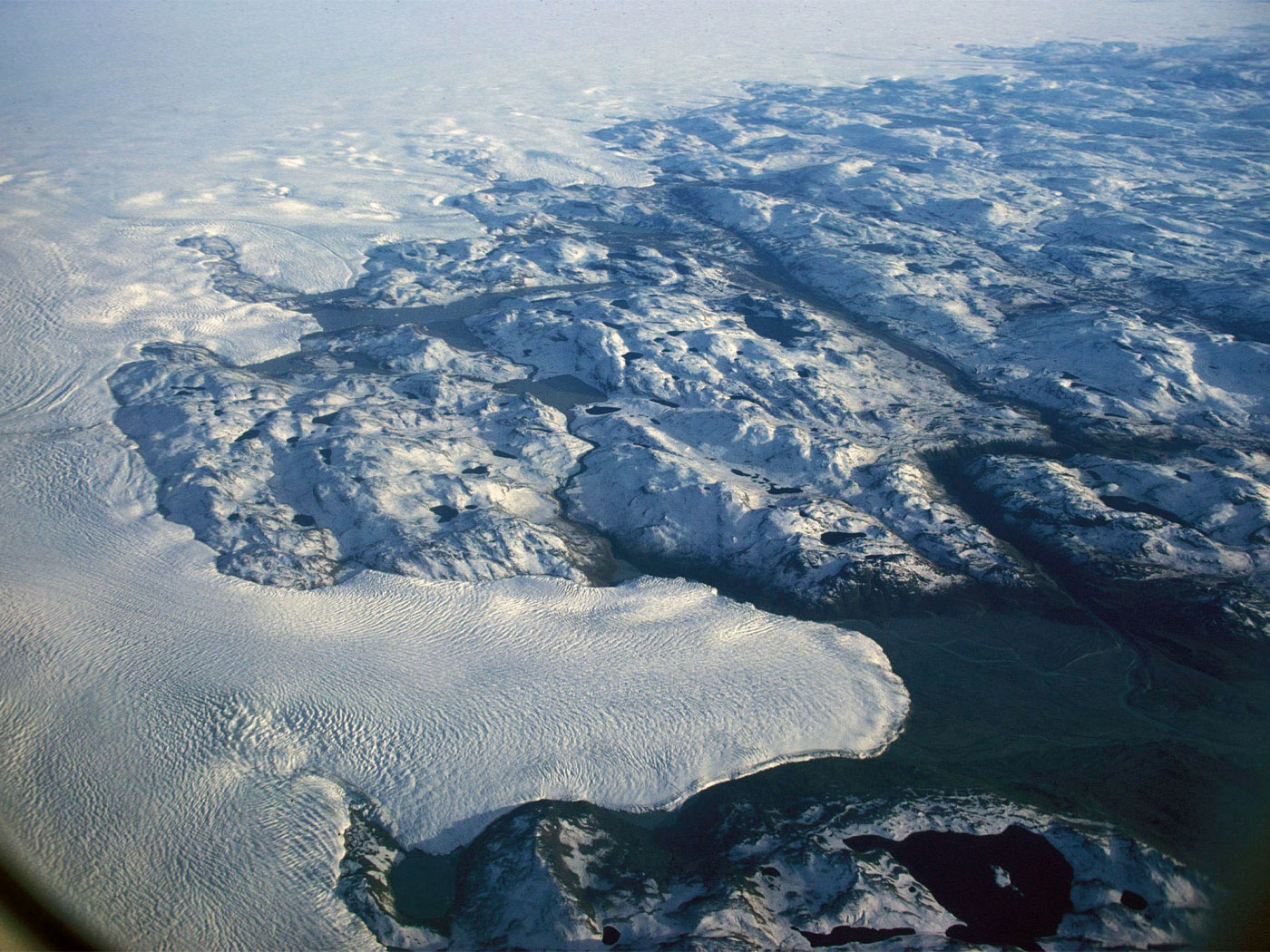A chasm exists between all physical objects fashioned by human hands and those made by God. That which is made by us may appear to exhibit genius in design and construction, but a closer inspection always reveals much crudeness. The automobile is a good example of a human masterpiece of functional design. However, a close inspection reveals many small flaws—e.g., imperfections in the shaping of the metal parts—in its manufacture that eventually spell its destruction, most often in less than a decade.1
With God’s creations this is not so; increasing magnification always reveals added dimensions of design, detail, and function. Examination of a beautiful Swiss watch with a scanning electron microscope shows the metal parts of the finest craftsman to be crudely machined with minute flaws and imperfections everywhere.
Conversely, pictures of the natural world taken with the scanning electron microscope reveal that the more closely the natural world is examined, the greater the functional complexity and symmetry of design appear. The microscopic cells of plants and animals are chemical factories more elaborate than, and producing products of a quality that far exceeds, any constructed by humans.
The complex macromolecules making up organelles reveal even more detail and are beautiful examples of the design found throughout the submicroscopic world. This is likewise true of the subatomic particles that make up the atoms in the macromolecules. The finest of human creations seem shabby when compared with those designed by the Master Architect.
Modern research tools such as the scanning tunneling electron microscope have vastly opened up the world of nature, revealing a design that is not apparent at a lower magnification. The color scheme, design, intricacy of composition, and patterns that high magnification reveals are similar to those found in the natural world by the naked eye, but they are far more complex.2
Humans as Copiers
Human makers of manufactured goods often attempt to copy the “natural,” or non-human, world.3 What are usually referred to as “natural” are actually God-designs that He incorporated into the original creation. Vinyl, made out of molded rubber plastic, is designed to imitate leather or the hide of some animal such as a crocodile. The grooves and printed color patterns in the vinyl are incorporated solely to resemble an animal’s hide. This natural pattern is judged by most viewers to be more beautiful than vinyl without the folds and color variations.
Today, most products incorporate the color, grain texture, and appearance of cowhide, wood, or other natural forms. Why pattern a car dashboard after common wood or cowboy boots after snakeskin? Could not our gifted, highly paid, college-educated designers come up with a pattern superior to that which already occurs naturally? Industry’s best has not been able to develop a more appealing pattern, and they probably never will. In fact, our copy often turns out to be a poor imitation and, at times, a health or ecological hazard.
Learning About the Designer from His Designs
This flagrant copying manifest in almost everything human-made reveals something about the original Designer. Evidence for a Creator is found in creation, and the more we know about creation, the more we know about the Creator. For example, animal skin is both beautiful and functional—skin folds existing in leather help the animal by serving as “give points” designed to help the animal move around more comfortably.
The grain of the wood we admire so much results from the tree’s vascular circulatory system—clearly functional but, again, also very beautiful. Its design is superior to that produced by the human designers who try to copy it, and we have not been able to improve on God’s design.4
Human works are invariably a modification of some aspect of the natural world, modifying something normally found in the natural world. Oil paintings are good examples; throughout history, the majority of artworks, according to the ones that have survived, were copies of something found in God’s world. Painters painted people, forests, sunsets, mountains, flowers, animals, or other things that abound in nature.
Various art forms called “surrealism” that use photographic-quality pictures to paint grotesque scenes have recently become popular in some circles. Although these painters try to create something new, what is actually achieved is the alteration of a theme found in nature. They may change the normal size, shape, texture, color, position, or the proportion of objects normally found in it. Instead of showing the sky blue, they paint it red; or instead of portraying the grass green, they render it purple.
Another art technique is the painting of mechanical or various solid shapes or blending masses of color to show movement or feeling called “modern art.” Most human-constructed shapes, though, are predominantly geometrical, i.e., a combination of round, square, or straight surfaces, and thus are actually only alterations or recombinations of the natural world.
Science fiction drawings sometimes appear to represent a high level of creativity, but most often they have their source in the natural world. A study of supposed UFO humanoids revealed that they often bear a clear resemblance to a human fetus. Believers in extraterrestrial beings claim that four types of “human” space creatures exist: Humans (persons identical to humans living today), humanoids (animal-human combinations, such as human heads with goats’ horns), apparitional persons (spirits which cannot be seen except as a faint image), and robots (creatures that often consist of some type of dehumanized grotesque or bizarre mechanized living or nonliving gadget). Whether the claimed UFO creature sightings result from a psychological disturbance or creative imagination, the supposed creature often resembles persons or objects from the natural world.5
Copying Patterns in Product Design
Copying naturally occurring patterns is common in product design. Some glass porcelain vases and lamps contain hundreds of minute cracks as part of their design. This “natural process” was at one time common in their production, but it is done today primarily for beauty. This is also true of surface unevenness and imperfections such as air bubbles in the walls of glass bottles. These traits were at one time a result of our crude glass-making techniques.
These natural effects are artificially induced to help the object look antique and, therefore, become more attractive. A popular coating known as crackle paint—designed so that the outer layer dries faster, thus buckling up and resulting in a wrinkly surface—is commonly found on medical and scientific instruments. Cracking was at one time a spray-painting problem, but it is now a popular finish. Barron astutely concludes:
Creativity may be defined quite simply as the ability to bring something new into existence....since human beings are not able to make something out of nothing, the human act of creation always involves a reshaping of given materials whether physical or mental. The “something new” is a form made by the reconstruction of, or regeneration from, something old.6
To make anything from a pencil to an automobile, we simply reshape materials such as wood and iron into that which already exists in nature. We are doing nothing more than moving around and reshaping existing natural materials. True, it requires tremendous intelligence, skill, and energy to properly rearrange the materials, but nothing new is actually created. Most human development, termed “progress” in prideful moments, largely amounts to the redoing of someone’s past work, only slightly changing previous products, all of which started as parts of the natural world. Products are changed into something viewed as “new,” yet nothing is really new. There is, as King Solomon reported, “nothing new under the sun.”7
References
- Lester, L. 1982. Biology Handbook. Greenville, SC: Bob Jones University Press.
- Paturi, F. 1976. Nature, Mother of Invention. New York: Harper & Row.
- Munch, T. 1974. Man the Engineer—Nature’s Copycat. Philadelphia, PA: Westminister Press.
- Paturi, Nature, Mother of Invention.
- Lawson, A. 1982. Birth Trauma and UFO Abduction. Frontiers of Science. 4 (2): 20.
- Barron, F. 1969. Creative Person and Creative Process. New York: Holt, 10.
- Ecclesiastes 1:9.
* Dr. Bergman is an Adjunct Associate Professor at the University of Toledo Medical School in Ohio.
Cite this article: Bergman, J. 2012. Humans: The Imitators. Acts & Facts. 41 (6): 18-19.





















